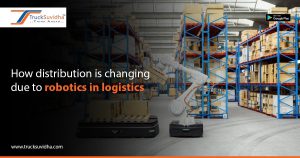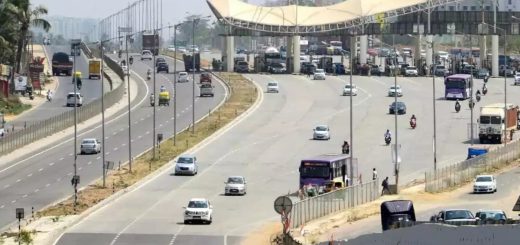How distribution is changing due to robotics in logistics
The integration of robotics and artificial intelligence into logistics and transportation is one of the topics that is developing steadily but that is less well-known. This application’s impact on the company is fairly significant, with some effects being favorable and others being detrimental. Companies and manufacturers need to learn about robotics and machine learning before this scenario becomes more common.
When robotics get used in industrial distribution, processes like organizing, transferring, delivering, and retrieving products from a warehouse are also get automated by utilizing robots and machinery with smart systems.
Industrial robots differ from typical machinery as they are mainly linked to artificial intelligence systems that enable them to manage more complicated variables and respond rapidly and independently using algorithms.
This means that in contrast to a robotic arm in a traditional production line, a smart logistics robot may learn new jobs and carry them out to handle activities that previously required human aid. Industrial robots streamline procedures while supporting manual labor.

Artificial intelligence and other types of robots in logistics
- Automated arms and equipment
The robots with arms that can pick up items, close and seal boxes, and transport parcels from one shelf to another are the ones that are the simplest to spot.
This kind of equipment has been the most popular up to this point, and it is common in many businesses, particularly those in the automotive sector.
- Drones
If we talk about the future and artificial intelligence, drones are without a doubt the warehouse management robots that come to mind.
A drone is a robot that can fly, carry a certain amount of weight, move objects, and access regions that are difficult to reach (this includes geographic areas, like isolated villages, and deep shelves or places that are higher in a warehouse).
- RFID systems
Although RFID tags include more information than traditional barcodes, reading products with RFID tags is more thorough. An RFID-equipped drone can locate items in a warehouse and improve control over inventory and unit movement.
When compared to a person performing the operation manually, a drone equipped with an RFID technology can read hundreds of labels in a relatively short amount of time.
- Robotic vehicles
Small, self-driving cars known as robotic vehicles can go without a driver or remote control. Robotic cars are typically a supplement to the work of warehouse workers since machine learning technology enables them to be independent and dependable.
Uses of robotics in logistics
Management of inventories and warehouses
As we’ve seen, automated robots with artificial intelligence can help warehouse managers manage their operations more safely and effectively.
Poor inventory management is one of the worst distribution nightmares because it has a negative impact on the company and results in losses due to incorrect stock figures and shipping errors. Drones and arches provide logistics teams with accurate and up-to-date inventory information in real-time, reducing time spent on repetitive review tasks, as well as errors and costs. They also aid in warehouse organization by optimizing space and identifying empty areas.
Inventory transfer
The logistics processes of picking and mobilization have historically required a significant amount of time and posed hazards to worker safety when commodities get unloaded, relocated, or chosen for shipping. Although not all drones and robots are capable of handling various weights and sizes, robotics increases safety and speed when unloading, lifting, storing, and packaging any pallet.
Order deliveries
Robotics and machines in warehouses have been the subject of our discussion up to this point, but they also have functions outside of storage facilities.
Drones and autonomous vehicles will become increasingly efficient at shipping huge items or small orders to individuals, as in e-commerce. A controller can monitor the vehicle’s signals remotely, follow them in real-time, and verify customer satisfaction. These artificially intelligent robots may determine the optimal route, save money because they operate without gasoline and a driver, identify impediments, and adjust to weather conditions like rain or snow.
Conclusion
Robots, artificial intelligence, and machine learning in logistics are not concepts from a science fiction book; rather, they are realities that are already starting to take shape.
It is crucial for the logistics sector to receive support, information, and financial backing to adapt to the future, which is gradually becoming more prevalent, as a result of impending technological developments. The secret to surviving in the future without relying on cheap Asian technology and without witnessing a detrimental impact on home jobs will be training and preparation now.\
Visit us- TruckSuvidha.com




Recent Comments